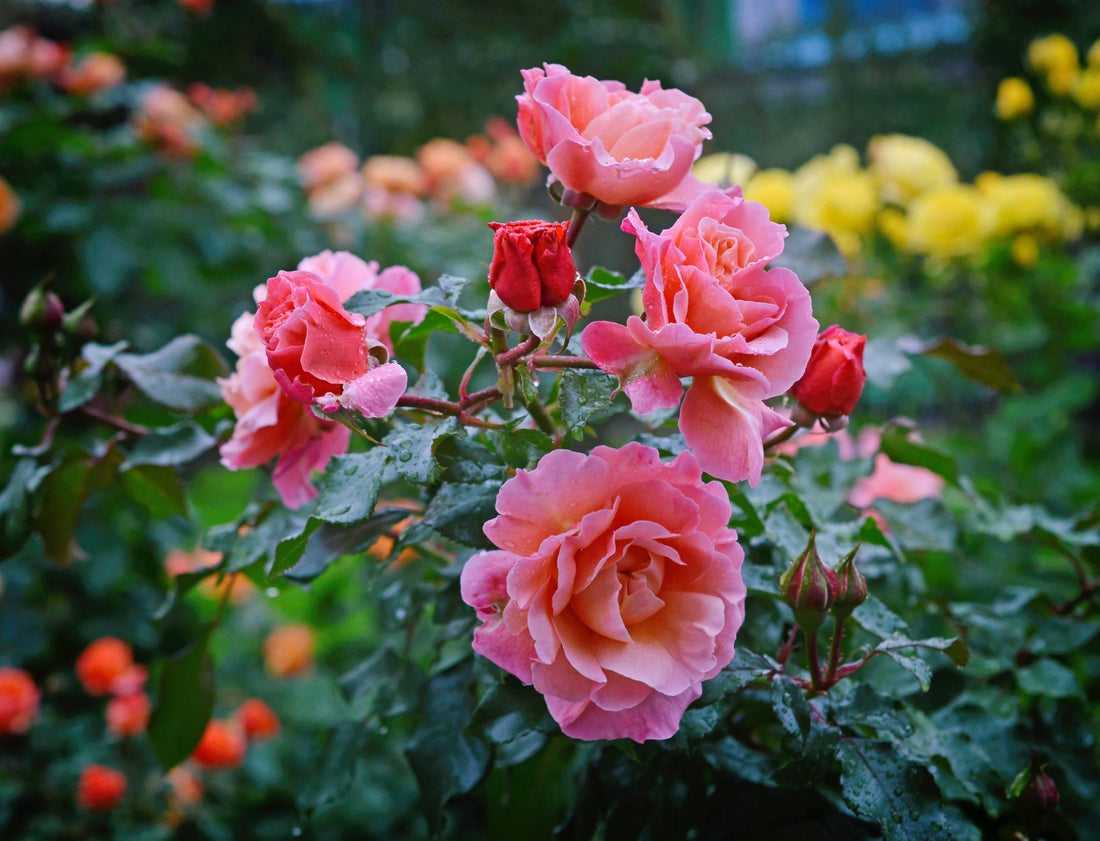How to Care for Roses: A No-Nonsense Guide
If roses intimidate you with their regal beauty and finicky reputation, I’m here to spill the dirt: caring for roses in Keswick isn’t rocket science. Whether you're a newbie gardener or a seasoned pro, growing these stunners is totally doable. Let’s break down how to plant, care for, prune, and winterize your roses, plus what types might be your best bet.
How to Plant a Rose (Grown in a Fibre Pot)
So you’ve snagged a rose in a fibre pot? Lucky you! Here’s the lowdown:
- Pick the Right Spot: Roses love sunshine like we love patio season. Choose a spot that gets at least 6 hours of direct sunlight a day.
- Dig the Hole: Dig a hole about twice as wide and as deep as the fibre pot. You want to give those roots plenty of wiggle room to grow.
- Prep the Soil: Roses love well-drained soil, so mix in some compost or organic matter to boost the nutrients. Think of it as a rose buffet.
- Plant the Rose: Plop the rose (still in the fibre pot) into the hole. The fibre will break down, so no need to remove the pot. Make sure the top of the pot is level with the ground.
- Backfill and Water: Fill in the hole with soil and give it a good watering to settle the rose in its new home. Add mulch around the base to keep the roots cool and moist.

How to Care for a Rose Throughout the Season
Now that your rose is in the ground, it’s time to keep it happy and blooming.
- Watering: Roses love a good drink. Water deeply, about 1-2 inches per week. Avoid getting water on the leaves to prevent disease, and always water in the morning. Think of it like giving your rose a coffee boost before the day begins.
- Fertilizing: Feed your roses a balanced fertilizer or one made specifically for roses. Start feeding them in early spring and continue every 4-6 weeks until mid-August. After that, let them naturally slow down as winter approaches.
- Deadheading: Snip off spent blooms to encourage more flowers. Plus, it keeps the plant looking tidy, which we all appreciate.
How to Prepare a Rose for Winter
In Georgina, winter isn’t just cold—it’s downright icy. Your roses need some serious winter TLC.
- Stop Fertilizing: Stop feeding your roses in mid-August to help them wind down for the winter.
- Prune: In late fall, prune your roses back lightly to prevent wind damage. Don’t go overboard—save heavy pruning for spring.
- Mound with Soil: Once the ground starts to freeze, mound soil (about 12-18 inches) around the base of your rose. This insulates the roots and keeps the plant frozen, which is key for winter survival. The goal is to keep the rose dormant until spring.
- Wrap if Necessary: If you’re growing delicate varieties (like Hybrid Teas), consider wrapping the plant with burlap for extra protection.

Things to Watch Out for When Growing Roses
- Black Spot: This common fungal disease shows up as black spots on leaves, followed by yellowing. Prevent it by watering at the base and pruning for good air circulation. If it hits, treat with a fungicide.
- Aphids: These little pests suck the sap from your roses, causing stunted growth. A strong blast of water or insecticidal soap should send them packing.
- Powdery Mildew: Another fungal issue, powdery mildew looks like someone dusted your leaves with flour. Keep the area around your roses clean, and avoid overhead watering. Neem oil works well to control it.
How to Prune a Rose
Pruning may seem scary, but trust me, roses *need* it. Here’s the simple way to do it:
- Time it Right: Prune your roses in early spring, when the buds start to swell but before they fully leaf out.
- Remove Dead and Diseased Wood: Start by cutting out any dead, damaged, or diseased wood. These are the bad apples of the plant world and only cause problems.
- Shape It Up: Next, prune for shape. Cut back about a third of the plant, always cutting just above an outward-facing bud at a 45-degree angle. This encourages the rose to grow outward instead of into a tangled mess.
- Thin It Out: Remove any weak or crossing canes to improve air circulation. This prevents disease and helps the plant focus on growing strong, healthy canes.

Different Types of Roses
Roses aren’t one-size-fits-all, so let’s dive into the different varieties:
- Hybrid Tea: The prom queens of the rose world, known for their large, single blooms. They require extra care but are showstoppers.
- Floribunda: These roses bloom in clusters and are more compact than Hybrid Teas. They’re great for mass planting and are more forgiving in terms of care.
- Grandiflora: A cross between Hybrid Teas and Floribundas, these roses combine the best of both worlds: big blooms and lots of them.
- Climbing Roses: If you’ve got a fence or trellis that’s begging for blooms, climbing roses are your go-to. Just be prepared to train them as they grow.
- Shrub Roses: Low-maintenance and hardy, shrub roses are perfect for a more casual look. These are workhorses that still bring beauty.
- Landscape Roses: These are bred for disease resistance and ease of care. Think of them as the no-fuss, easygoing types that fit into any garden design.
- Ownroot Roses: These are roses grown on their own roots (instead of being grafted onto another plant). They tend to be more cold-hardy and less fussy than grafted roses, making them perfect for zone 5.
What Rose is Easiest to Care For?
If you’re looking for low-maintenance beauty, Shrub Roses and Landscape Roses are your best bet. They’re disease-resistant, winter-hardy, and don’t require the pampering that other varieties do. Ownroot roses are also a solid choice for easy care, especially in colder zones like our zone 5.
So, there you have it, growing roses in Georgina isn’t as intimidating as it seems. With a little attention and preparation, you can enjoy their classic beauty all season long. Grab your pruners, get planting, and soon enough, your garden will be bursting with gorgeous, fragrant blooms!
Happy gardening!




